Great performance at an incredibly low price.
- Manufacturer: ASUS
- Model: VP247
- Price when reviewed: £89.99
- Supplied by: Reviewer
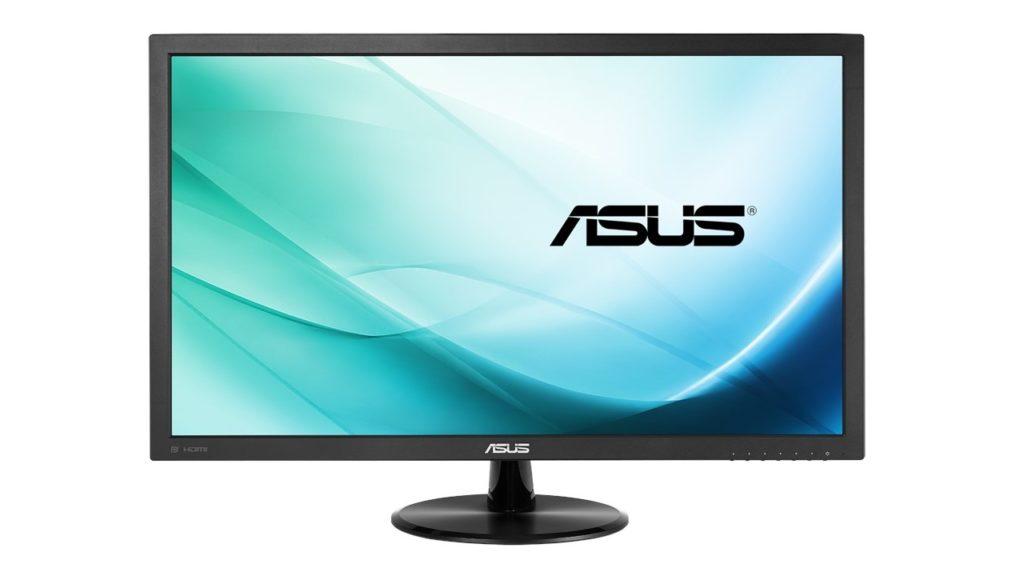
[su_accordion]
[su_spoiler title=”About” style=”fancy”]
Superior Image Quality Meets Classic Elegant Design
VP247H 23.6” Full HD monitor with 100,000,000:1 high contrast ratio, ASUS-exclusive SplendidPlus and VividPixel technologies are optimized for the finest image and color quality. This approach extends to the sturdy stand and slim profile without compromising style in ensuring stability and durability.
100,000,000:1 ASUS Smart Contrast Ratio
Dynamically enhances the display’s contrast by adjusting the luminance of the backlight to achieve the darkest black and brightest white – delivering lifelike images.
1ms Quick Response Time
1ms (GTG) quick response time eliminates ghosting and tracers for more fluid video playback.
[/su_spoiler]
[/su_accordion]
Middle of Lidl
Have you ever wandered down the middle aisle of one of the budget supermarkets and wondered, “Is this stuff any good?”
I had that same thought when I was walking through my local Lidl. In amongst the pizza ovens, garden furniture, Lego sets and power tools, I spotted a 24” gaming monitor for only £89.99. Normally, I’d chuckle at the random branded device, with a name like Supa-Tech, but this one was from ASUS. It’s cheap, it’s from a recognised and reputable brand, and there’s enough change from £100 to buy a couple of bags full of veggies and off-brand snacks. Is it any good, though?
Well, I’m sure many are wondering the same thing, so I took one for the team and picked one up.
Design and build
The ASUS VP247 is a decent looking monitor when you consider the price. The bezels are a little larger than those found on more expensive monitors but better than those on comparably priced offerings from their competitors. It’s also quite slim, and when paired with the discrete stand it cuts an attractive profile.
The stand is very basic, but it’s reasonably solid. There’s a touch of wobble if you bump your desk, but for the most part, it’s stable and it’s easy to set it level on your desk. There is no pivot, height or swivel adjustment, however, it can be tilted +20°/-5°. There is a VESA 100 mounting point, so you aren’t restricted to the stand, but given the relatively small footprint, this shouldn’t be problematic anyway.
In contrast to the ROG or TUF Gaming ASUS divisions, there is no flashy styling here. The front and rear of the panel are coated in matte black plastic, with the only styling being a discrete ASUS logo on the lower bezel. It’s subtle but tasteful, and won’t look out of place in a home office.
At the rear, there isn’t anything to conceal your cables, although they are downward facing and discrete. For the majority of users, this shouldn’t be a concern, as they will most likely be hidden behind the screen. At this price range, you want the focus to be on performance and not extraneous styling anyway.
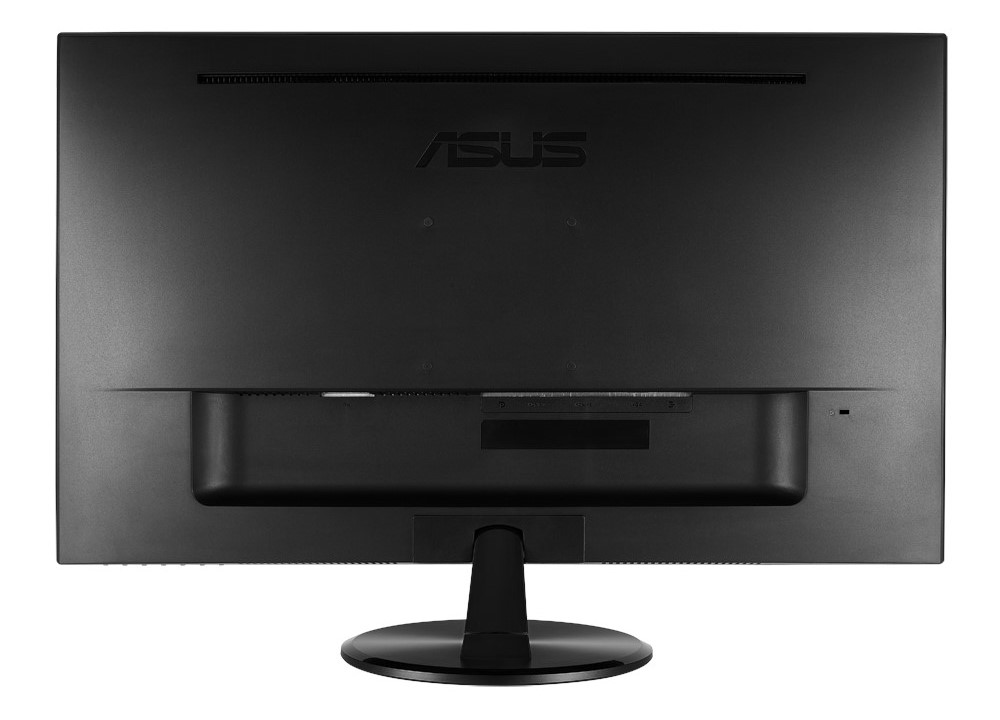
Connectivity
This is a budget monitor, and as such, the ASUS VP247 doesn’t have the plethora of ports you’d find on high-end models. What you do get is HDMI, DVI-D and 15-pin DSUB (VGA) ports for carrying the video signal, and audio can be carried via HDMI or the 3.5mm jack input if you’re using DVI or VGA inputs.
As VGA (and arguably DVI) is largely defunct these days, HDMI is likely to be the only input you use on this monitor. If you’re the kind of user who likes to have multiple devices plugged into your screen, you will likely have to purchase an HDMI splitter or resort to switching the leads around frequently. For a single-device setup, or to serve as an additional screen in multiple screen setups it works just fine, though.
You do get a pair of downward-firing 1.5W speakers built-in, but performance is average at best. Upper-mid range to treble is clear, but the bass and lower mid-range performance is almost non-existent. You will need some headphones or a set of speakers if you want to enjoy movies or games properly.
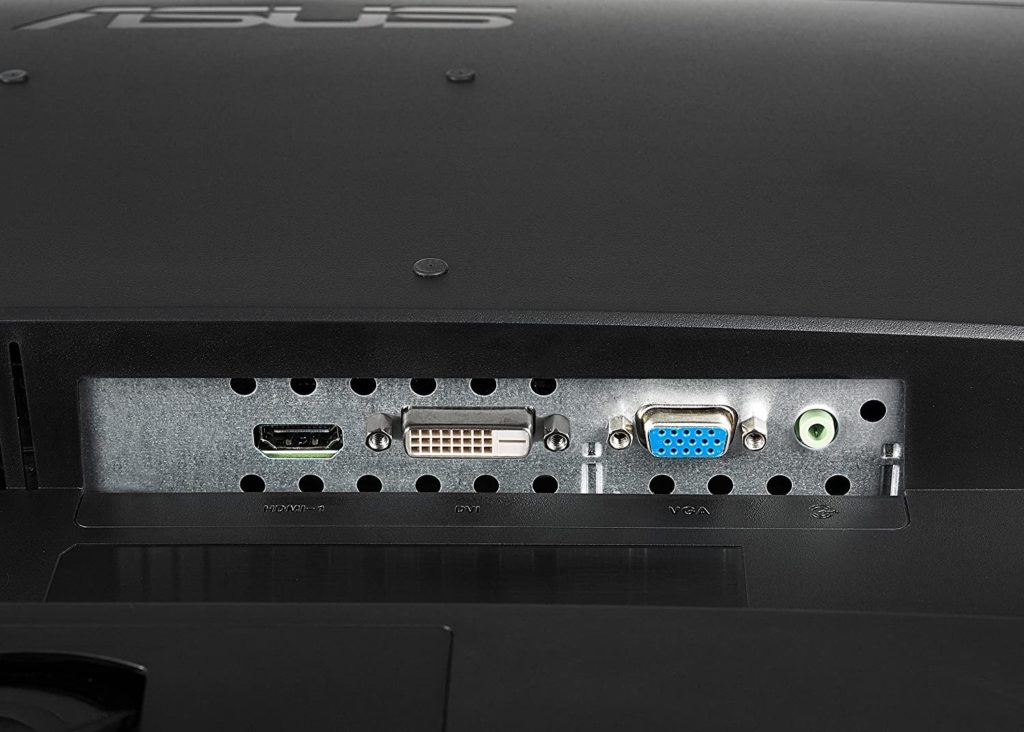
Performance
The most important part of a screen, and where the ASUS VP247 punches above its weight, is performance.
Packing a 23.6” TN panel, the response rate is fast, and the 75Hz refresh is above and beyond many other budget displays, even if it is only by a small margin. Native resolution is 1080p, which isn’t going to set the world on fire, but for a display of this size, it provides sharpness and clarity to images. If you are buying this for a base Xbox One, PS4 or entry-level gaming PC, this is a favourable trade-off.
TN panels aren’t renowned for their black levels, however, the VP247 produces decent dark images. Dark scenes in games and movies still tend to come out with a subtle grey tinge, but overall I was impressed. It’s not as noticeable when viewed in a well-lit room, but even if you do your gaming at night or in a dark room it’s no worse than many IPS panels.
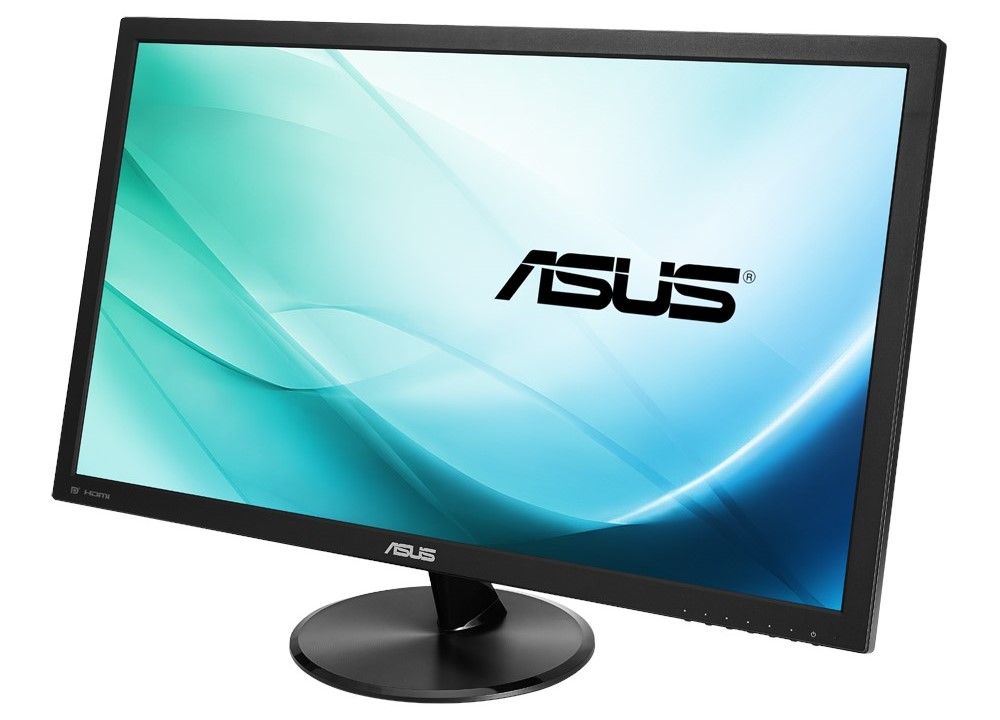
Colour and brightness is surprisingly good, though. We found the display bright and, when viewed head-on, colour saturation was excellent. There was some noticeable colour shift when viewed at angles, particularly when positioned above or below the screen, but for the most part screen uniformity was very good. I wouldn’t recommend the VP247 for any colour-critical editing or production work, but for gaming and watching movies it puts in a brilliant performance.
When playing fast-moving games, we didn’t detect any ghosting or notice any artefacts being introduced. Input-delay was negligible and as such we found this display to be exceptionally good for competitive gaming, especially on consoles. Image noise was very low, and we found even the smallest details were crisp and clearly presented. It’s a very impressive display when it comes to pixel clarity and definition.
The anti-glare coating isn’t the best we’ve ever tested, but it works well. When faced with bright, direct light, it diffuses the light sufficiently to prevent glare and reflections ruining your display. But, as with many coatings, it does have the tendency to soften the image somewhat in a darkened room. This is comparing it with far more expensive panels, though, but when compared with other budget offerings, it’s definitely one of the better options.
When compared with panels in the same price range, the ASUS VP247 is head and shoulders above the competition.
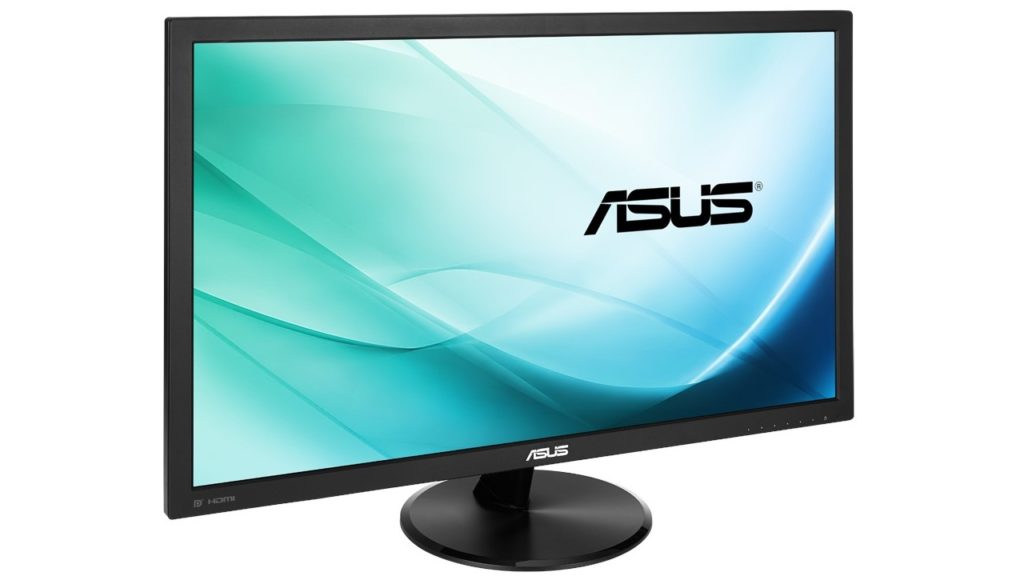
Who is it suitable for?
There are lots of use-case scenarios where this monitor is ideal.
For a younger gamer, the VP247 is ideal as a bedroom screen for their console, freeing up the family TV. Or, if you are interested in streaming and want a second screen to display your channel chat on then this is a suitable option, at a great price.
I currently have mine set up as a secondary screen for my work laptop. If I need to type on a proper keyboard or want to play a few games, I can just stick the HDMI in and benefit from additional screen-space. The 1080p display pairs well with the modest AMD GPU in my laptop, too, and it allows me to game at a solid 75Hz.
With the current shift towards working from home for a lot of people, it’s an excellent choice. The ASUS VP247 is better than anything you will find in this price range. It’s better than screens costing double what it can be picked up for, actually. For budget-conscious shoppers, there isn’t a better option that we know of.
It’s also a cheap way to get set up for triple-screen gaming, but the size of the bezels and lack of a DisplayPort connection would dissuade us from recommending buying three of these.
In fact, if you just want a new primary display without breaking the bank, for £89.99 there is no competition. Nothing in that price range even comes close.
Summary
For a monitor costing under £90, the ASUS VP247 is an absolute bargain. It has a bright, colourful screen, and gaming performance is great. Build quality is very good as you would expect from ASUS, and performance is far better than you would expect at the price. Black levels are average but no more so than other TN panels we’ve tested, however, that’s the only real significant negative to this display.


Bexilford
24th June 2020 at 5:33 amMy local lidl is selling Asus VP247hae which doesn’t have speakers
Gary Teasdale (PLOP DjMessiah)
27th June 2020 at 10:03 amI’ve spotted a few variants in Lidl, including a model with a DisplayPort connector. It’s worth checking which model they are stocking if you are relying on the speakers. The real reason to buy this monitor is the excellent picture quality, though. Even if you find the variant with speakers, I would recommend a headset or even just cheap desktop speakers if you pick up one of these monitors, as the sound is not great.